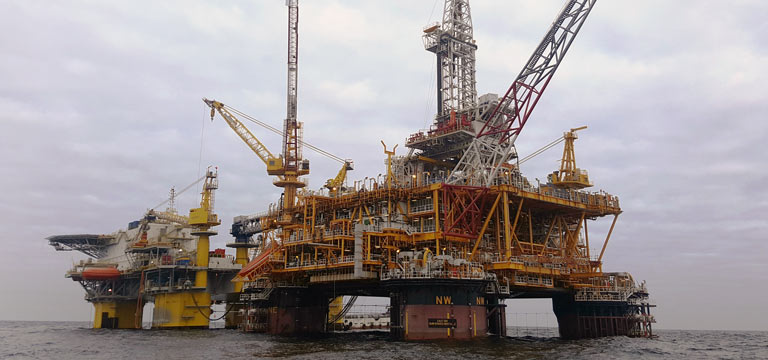
刚果共和国
突出的操作
雪佛龙通过子公司雪佛龙海外(刚果)有限公司在刚果共和国开展业务。我们支持该国最大的石油和天然气项目的开发,该项目位于一个富饶的深水盆地,我们还参与了该国与安哥拉共享的一个海域的海上开发。
雪佛龙是一个强大的、始终如一的社区成员。20多年来,我们一直在刚果共和国进行社会投资。
业务组合
在刚果共和国,雪佛龙拥有31.5%的非经营性开采权益(Nkossa、Nsoko和Moho Bilondo)。2019年12月,政府批准了Nsoko的新许可证,并改善了莫霍-比隆多的财政条件。此外,雪佛龙是Lianzi一体化区块的运营商,并持有该区块31.3%的权益。Lianzi一体化区块位于安哥拉和刚果共和国共享的区域。2019年,我们的作业平均净日产量为4.9万桶液体。
刚果-安哥拉联合开发区
的Lianzi项目该公司是雪佛龙在刚果共和国运营的首个资产,也是中非海上首个跨境石油开发项目,包括生产井和注水井,并通过海底回接至安哥拉14区块的Benguela Belize-Lobito Tomboco平台。
探索
2019年6月,该公司放弃了Haute Mer B区块20.4%的非经营性开采权益。

在社区
自1995年以来,雪佛龙一直是刚果共和国社区的积极成员。我们支持促进健康、安全、教育和地方发展的倡议。我们在这个国家超过80%的劳动力是刚果人。
健康
多年来,雪佛龙通过与部门抗击艾滋病部门的合作,帮助抗击艾滋病毒/艾滋病。我们共同发起了各种社区外展倡议,并与工作人员举行了教育研讨会。每年,合作伙伴们都会对该国第二大城市黑角(Pointe-Noire)的居民进行自愿筛选。
此外,雪佛龙还组织了一项健康计划,重点是为员工、承包商和他们的客人提供每月步行服务。
安全
几年来,雪佛龙公司与刚果红十字会合作,在黑角举办了急救讲习班。这些讲习班为雪佛龙的员工和承包商及其家属提供急救和救援方面的培训。雪佛龙还支持刚果红十字会的人道主义使命。
教育
雪佛龙在该国的主要教育项目集中在Nanga小学,位于黑角东南部一个人口稠密的地区。2017年,我们参与了学校第三栋大楼的建设,并鼓励学校指导委员会自2015年在雪佛龙的支持下实施良好的治理。自2016年以来,这些举措帮助学生的成功率从51%提高到72%。
雪佛龙还支持黑角的另外两个教育项目:旨在提高法语读写能力的法语项目,以及石油工程师协会(Society of Petroleum Engineers)为年轻专业人士和学生提供的技术讲习班。
作为Moho Nord项目与Total E&P Congo运营公司的一部分,我们是两个社会项目实施的合作伙伴。第一个项目是在黑角刚果布拉柴维尔天主教大学的建设。二是布拉柴维尔农业与可持续发展专业学校Campus Terre d' Ecole建设。这两个项目将分别容纳800名和400名学生。
与1995年私人证券诉讼改革法案中“安全港”条款中前瞻性信息相关的警告性声明
本网站基于管理层对石油、化工和其他能源相关行业当前的预期、估计和预测,包含了与雪佛龙业务相关的前瞻性声明。词或短语,如“预期”,“期望”,“打算”,“计划”,“目标”,“预测”,“项目”,“相信”“寻求”,“时间表”,“估计”,“位置”,“追求”,“可能”“可能”“应该”“将”“预算”,“前景”,“趋势”,“指导”,“专注”“,”“正轨”,“计划”,“目标”“目标”“策略”,“机会”,“准备”,“潜在的”,和类似的表达式是用来识别这些前瞻性陈述。这些报表并不是对未来业绩的保证,并受到一定的风险、不确定性等因素的影响,其中许多都超出公司的控制范围,难以预测。因此,实际结果和结果可能与这些前瞻性声明中所表达或预测的内容有重大差异。读者不应过分依赖这些前瞻性陈述,这些陈述仅在本网站公布的日期发表。除非法律要求,雪佛龙没有义务公开更新任何前瞻性声明,无论是由于新信息、未来事件或其他原因。
可能导致实际结果与前瞻性声明中预测的结果存在重大差异的重要因素包括:原油和天然气价格的变化;改变炼油、营销和化学品的利润率;公司实现与企业转型相关的预期成本节约和效率的能力;竞争对手或监管机构的行为;勘探费用的时间安排;原油提采时机;替代能源或产品替代品的竞争力;技术发展;公司的供应商、供应商、合作伙伴和股权附属公司的经营结果和财务状况,特别是在原油和天然气长期低价格期间;公司的合资伙伴没有能力或未能为其分担的运营和发展活动提供资金; the potential failure to achieve expected net production from existing and future crude oil and natural gas development projects; potential delays in the development, construction or start-up of planned projects; the potential disruption or interruption of the company’s operations due to war, accidents, political events, civil unrest, severe weather, cyber threats, terrorist acts, and public health crises, such as pandemics and epidemics; crude oil production quotas or other actions that might be imposed by the Organization of Petroleum Exporting Countries and other producing countries, or other natural or human causes beyond the company’s control; changing economic, regulatory and political environments in the various countries in which the company operates; general domestic and international economic and political conditions; the potential liability for remedial actions or assessments under existing or future environmental regulations and litigation; significant operational, investment or product changes required by existing or future environmental statutes and regulations, including international agreements and national or regional legislation and regulatory measures to limit or reduce greenhouse gas emissions; the potential liability resulting from pending or future litigation; the company’s future acquisitions or dispositions of assets or shares or the delay or failure of such transactions to close based on required closing conditions; the potential for gains and losses from asset dispositions or impairments; government-mandated sales, divestitures, recapitalizations, industry-specific taxes, tariffs, sanctions, changes in fiscal terms or restrictions on scope of company operations; foreign currency movements compared with the U.S. dollar; material reductions in corporate liquidity and access to debt markets; receipt of required Board authorizations to effect future dividend and share repurchases; the effects of changed accounting rules under generally accepted accounting principles promulgated by rule-setting bodies; the company's ability to identify and mitigate the risks and hazards inherent in operating in the global energy industry; and the factors set forth under the heading “Risk Factors” on pages 18 through 21 of the company’s 2019 Annual Report on Form 10-K and in subsequent filings with the U.S. Securities and Exchange Commission. Other unpredictable or unknown factors not discussed on this Website could also have material adverse effects on forward-looking statements.
